All About Garlic
Learn all about garlic and the ways to prep it, store it, and use it. You can enjoy this aromatic vegetable (yes, technically a vegetable) raw or cooked; it adds its unique flavor throughout your favorite recipes and it’s a favorite around here!
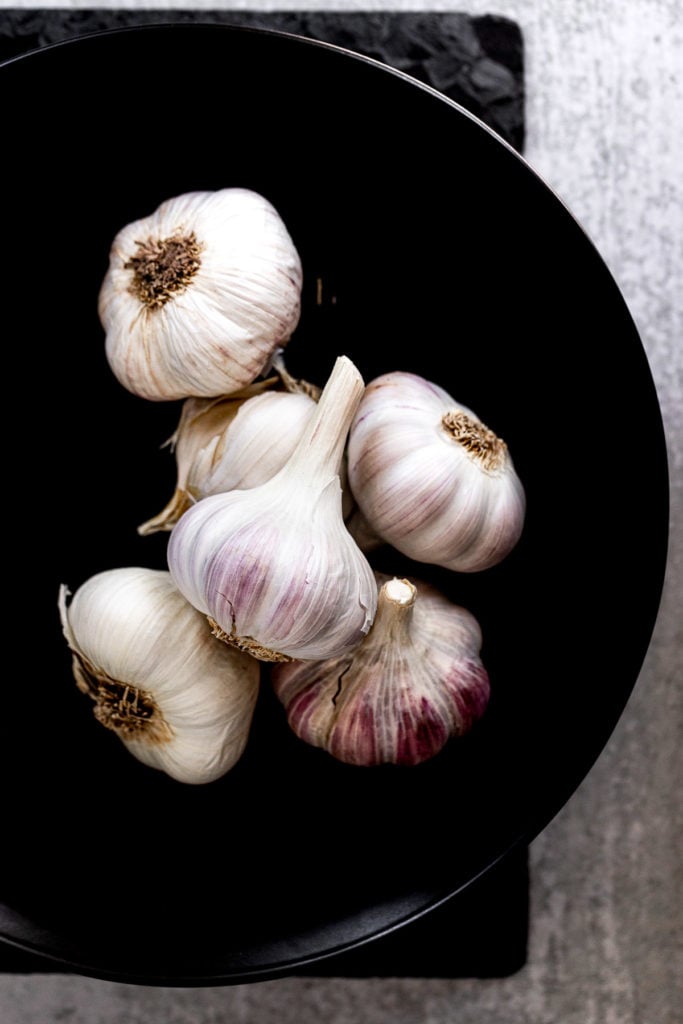
If there’s one ingredient that defines Fork in the Kitchen’s savory recipes, it’s gotta be garlic. If I can add garlic to a recipe, it’s there, with its burst of unique flavor, and versatility, it’s a must-have in creamy pasta, paired with potatoes, in aioli, and even with grilled cheese.
Table of Contents
- What is Garlic?
- Is Garlic Healthy?
- Fresh vs. Jarred
- How to Store Garlic
- How to Peel
- 5 Ways to Prep Garlic
- Garlic Powder vs. Garlic Granules
- More Garlic Questions & Answers
- More Recipes with Lots of Garlic!
What is Garlic?
Garlic is an allium, which means it’s a vegetable from the same family as onion, leek, shallot, and chives. Although it is technically a vegetable because the stem, leaves, and bulb can be consumed, it’s more commonly used like a spice or herb would be, rather than a vegetable.
The garlic plant has a bulb, a tall stem, and long leaves. The bulbs are comprised of about 10-20 individual cloves, which is what is most commonly consumed. The bulbs and cloves are wrapped in a paper-like husk that is discarded before use.
Garlic has a higher concentration of allicin reactions when damaged, which is where the flavor comes from, which makes it stronger in flavor and potency than those other allium veggies.
Raw garlic can have a spiciness to it, but not in the chili way per se. It can be warm with a heating sensation and a bit of a bite. The process of cooking garlic removes the allicin, making it sweeter and more mellow.
Spring garlic, or young garlic, is similar to scallions with a small bulb that hasn’t matured. Garlic scapes are the stalks that grow from the bulbs of garlic; harvested early, before the bulb is formed, they can be enjoyed in recipes.
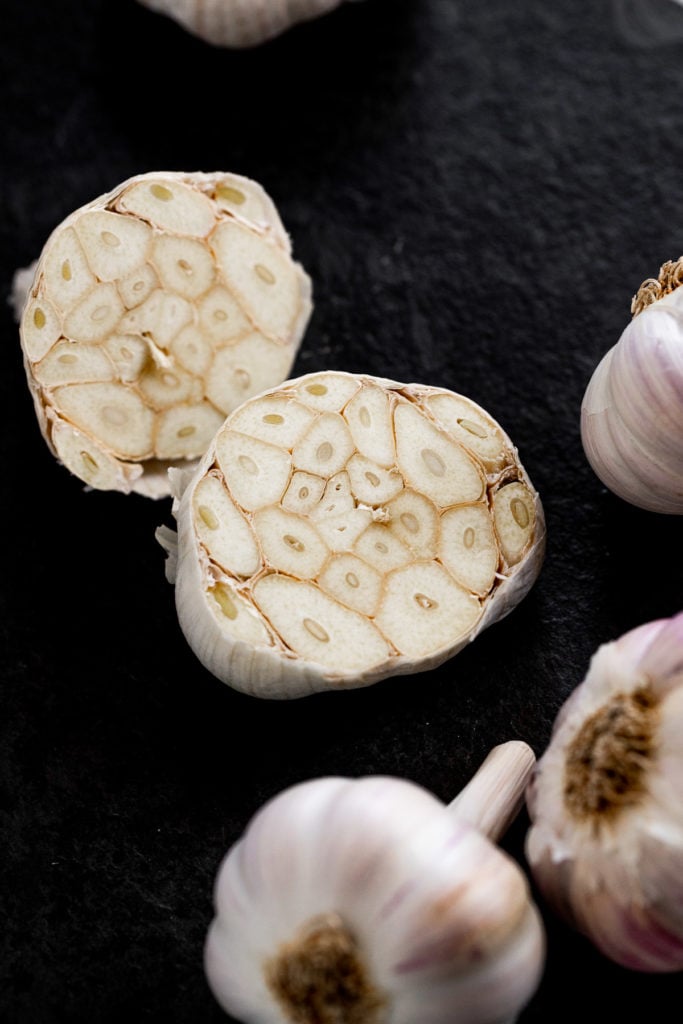
Is Garlic Healthy?
Here at FITK, we value all foods and don’t really like to consider foods healthy or unhealthy, bad or good, rather each food serves a purpose, whether that’s providing certain nutrients, comfort, or happiness.
So when you consider the nutrients of garlic, yes, garlic has many positive health benefits when it’s consumed. Many research studies have shown that garlic has both anti-inflammatory and anti-microbial benefits. It can also benefit gut and cardiovascular health.
Allicin (what gives garlic its garlicness) is created when alliin and alliinase come together when the garlic clove is crushed or chopped. Alliinase is the heat-sensitive enzyme, though, which means it’s basically destroyed if immediately introduced to heat (i.e. cooked with).
According to this fascinating book Eating on the Wild Side* by Jo Robinson, to retain the health benefits of garlic, prepare the garlic as you would (chop, smash, mince, whatever) and allow it to sit for 10 minutes away from heat.
Don’t let garlic sit too long though; the longer it sits, the harsher its flavor.
This time allows the garlic to produce the most alliinase, and thus the heat-sensitive enzyme is no longer needed. Then, you can cook with garlic and retain many of its health benefits. Enjoying raw garlic, like in tomato bruschetta? No need to wait, because the health benefits will remain since no heat is added.
Fresh vs. Jarred
I get it, we’ve all been there, reaching for the jar of minced garlic* at the grocery store because we don’t want to be bothered with peeling, chopping, and saving those few extra minutes when trying to get dinner on the table on busy weeknights matters.
While jarred, already minced garlic may seem more convenient, there are some key takeaways when it comes to comparing jarred to fresh garlic.
Jarred garlic is much less flavorful. Like most fresh foods, the flavor of garlic quickly changes once it’s cut; that chemical reaction we mentioned above starts happening. The longer garlic sits (above that 10-minute point), the stronger the enzyme is, eventually making the flavor overpowering and almost rancid.
Jarred garlic also just sits, soaking in water and a stabilizer, often citric acid, for… who knows how long?! This means that flavor just continues to change, in part from the stabilizer, and well, the fact that it’s just sitting.
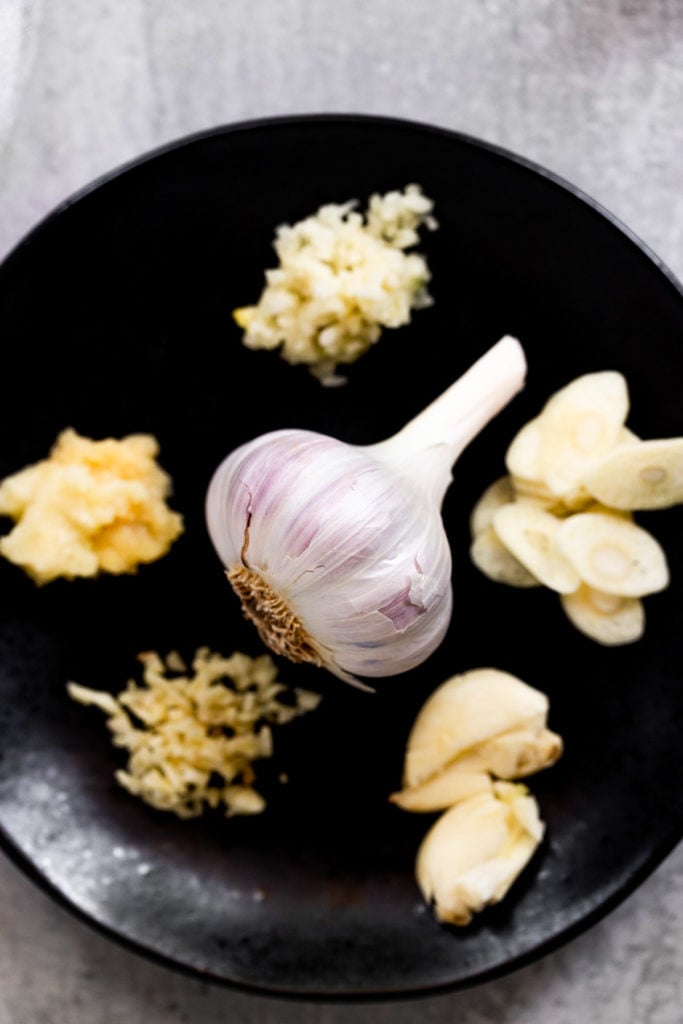
How to Store Garlic
Whole garlic bulbs should be stored in a dry, cool, dark place, like a cupboard. A whole bulb should stay fresh for several months when stored properly. Once a clove has been removed from the bulb, the remaining cloves should be used within a few weeks.
As long as the cloves are still in their paper-like husk on the bulb, they can continue to be stored at room temperature. Once a clove has been removed and peeled, store it in the fridge if needed. You can also freeze garlic to extend its shelf life.
Do note that over time, as garlic is stored, the allicin content can drastically increase, and may become too pungent or “hot” for your taste. Better to use it than lose it!
How to Peel
First, remove a clove from the bulb of garlic. If you’re able, you can simply just break off a clove. If the bulb is too tight to peel off a clove, use the palm of your hand to gently press the bulb and loosen the cloves.
Once the clove is removed, place it flat on a cutting board and press the side of a chef’s knife onto it, using the palm of your hand again. This will break the husk open, allowing you to peel it off.
If you’re peeling a lot of garlic, you can try using one of these nifty silicone garlic peelers*, or place the cloves in a jar and shake until the paper husk peels off.
5 Ways to Prep Garlic
Preparing garlic depends largely on how it will be used in the recipe. Does it need to be evenly incorporated throughout, like in a sauce or soup? Does the flavor need to be mellow or pungent? Does it just need to release its aromatics and lightly flavor the dish?
There are so many ways to prepare garlic, and each one does produce various intensities of garlic, depending on how much allicin is produced.
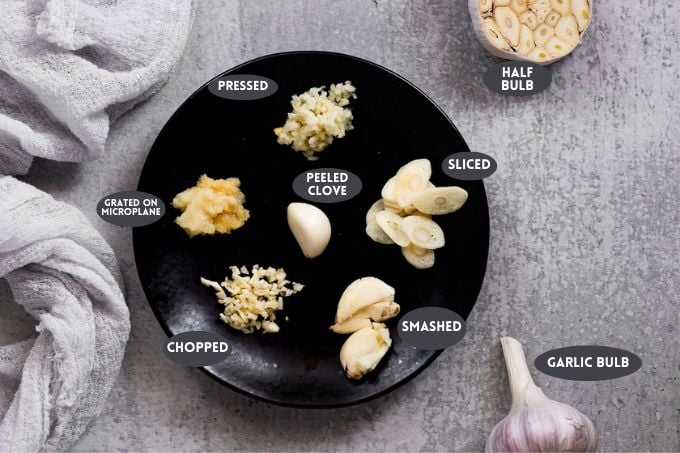
How to Mince Garlic
Garlic press and mincing garlic are often used interchangeably and are quite frankly the same thing when it comes down to it. Both essentially mean evenly sized very, very small pieces of garlic. Even those at Cook’s Illustrated couldn’t tell the difference between properly minced garlic with a knife, and a garlic press.
When garlic is to be minced, it needs to be very fine so it’s evenly incorporated throughout the dish (like pressing!). Often, home cooks with a knife cannot mince garlic fine enough, which is where the garlic press comes in.
Use a Microplane* to finely mince garlic if you don’t have a press; it turns it almost into a puree.
Garlic Press
Ok, so the garlic press gets a bad rap, and many chefs insist that you should be finely dicing and mincing your garlic using a knife. Home cooks loathe the cleaning of it. And quite frankly, a lot of presses suck (more on this in a minute).
But I disagree with this loathing of the garlic press. In fact, my garlic press is one of my most used kitchen tools. The press minces the garlic so fine and evenly, that the garlic flavor is easily infused throughout dishes. It reduces the chance of getting a larger garlic chunk in one bite and nothing in the next.
A garlic press also does the best job of combining the alliin and alliinase for the most allicin production (health benefits!); just remember to let it rest after pressing (thanks again, Robinson*!).
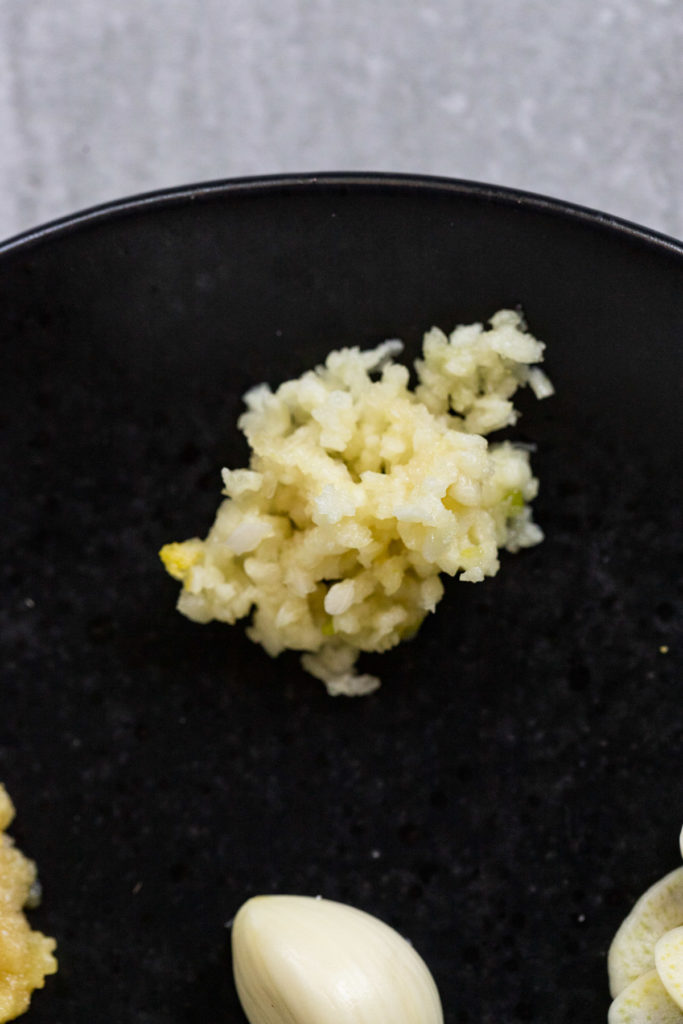
Find the Right Press
If you don’t have the right garlic press, then pressing garlic is a pain in the you-know-what. If it has a removable basket it can get lost, gunked up, or be difficult to press through.
I highly recommend investing in a garlic press that is both easy to use and is just one piece (i.e. no removable basket). It’s important that the bowl of the press can hold one large or several garlic cloves, and that you don’t have to peel the garlic before pressing (did I mention it’s my favorite?!).
Garlic Press
This is my favorite garlic press! It’s easy to hold and in one piece for easy cleaning. Using a garlic press helps break down the cloves very fine and evenly, much more than one with a knife can do. Plus, you don’t have to peel the cloves!
Photo credit: www.amazon.com
I have had both this garlic press from Pampered Chef* and another basket-type garlic press. When I was able to get my hands back on the one-piece press, I was thrilled.
They also make rocking garlic presses*, too. Shop around, hold it in your hands, and choose one that works best for you.
Rinse the garlic press immediately after use for easy clean-up!
Chopped
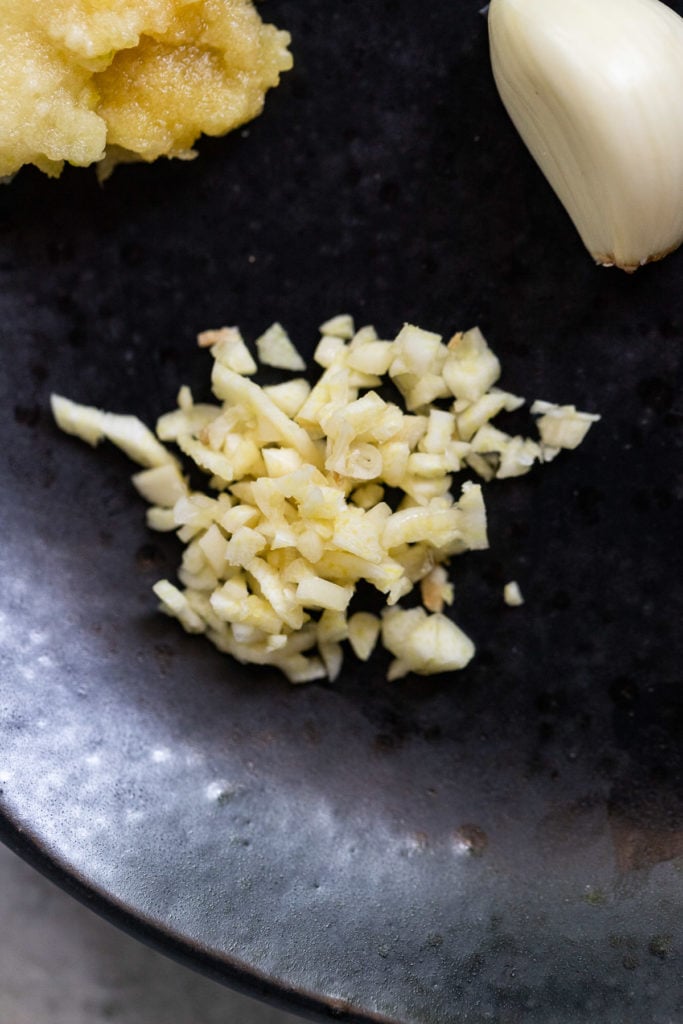
Chopping garlic with a knife, even if trying to do it finely, results in larger pieces of garlic when compared to pressed (or grated) garlic. Chopping garlic is best when you want to season a large recipe like chili, pasta sauce, or soup.
When chopped garlic is sauteed and then simmered in recipes like these, the garlic flavor infuses throughout, and the larger pieces of chopped garlic mellow, so bites of theme are delicious!
Sliced
Thinly slice the clove to add a softer, mild garlic flavor throughout a recipe and provide texture. This garlic pasta uses sliced garlic for bites of mellow garlic throughout (so yummy!).
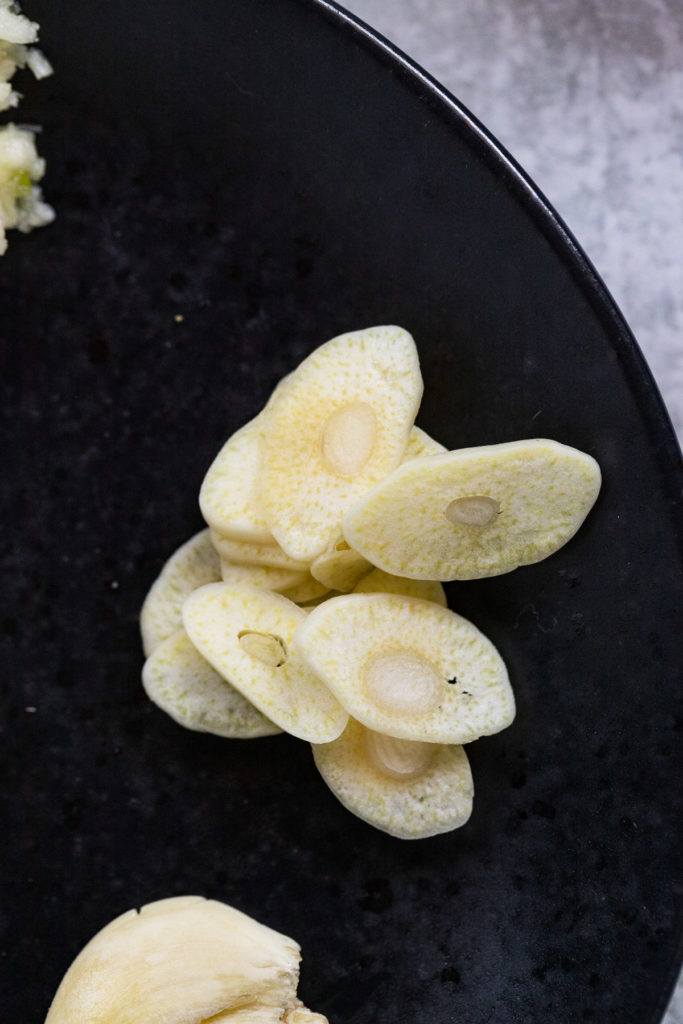
Smashed
Peel a garlic clove, then use the flat side of the knife, pressed on top of the clove, and press your palm firmly down to smash the clove. This begins to release the flavor of the garlic (the reaction!), but because the enzymes are not totally destroyed, the flavor is mild.
This is great for infusing olive oil or sauces where you want a mild garlic flavor throughout, without additional pieces. The clove can be removed after simmering in recipes, too.
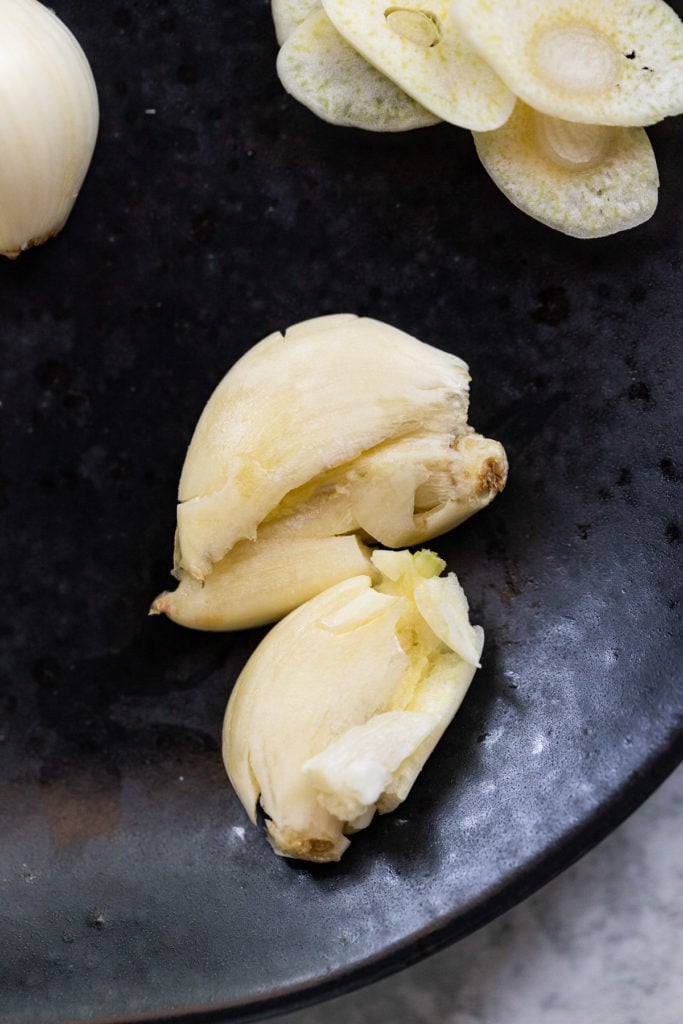
Roasted Garlic
Roasted garlic is one of my all-time favorite things.
To roast, cut the top off of a whole garlic bulb. Yep, the whole top. Doing this exposes each clove, making them easier to remove once they’re roasted, and it allows for olive oil to seep in, roasting the cloves themselves.
Place the whole bulb on a piece of foil big enough to wrap around the entire bulb. Once it’s on foil, drizzle a bit of olive oil on top of the bulb, along with a pinch of salt for good measure (depending on your recipe).
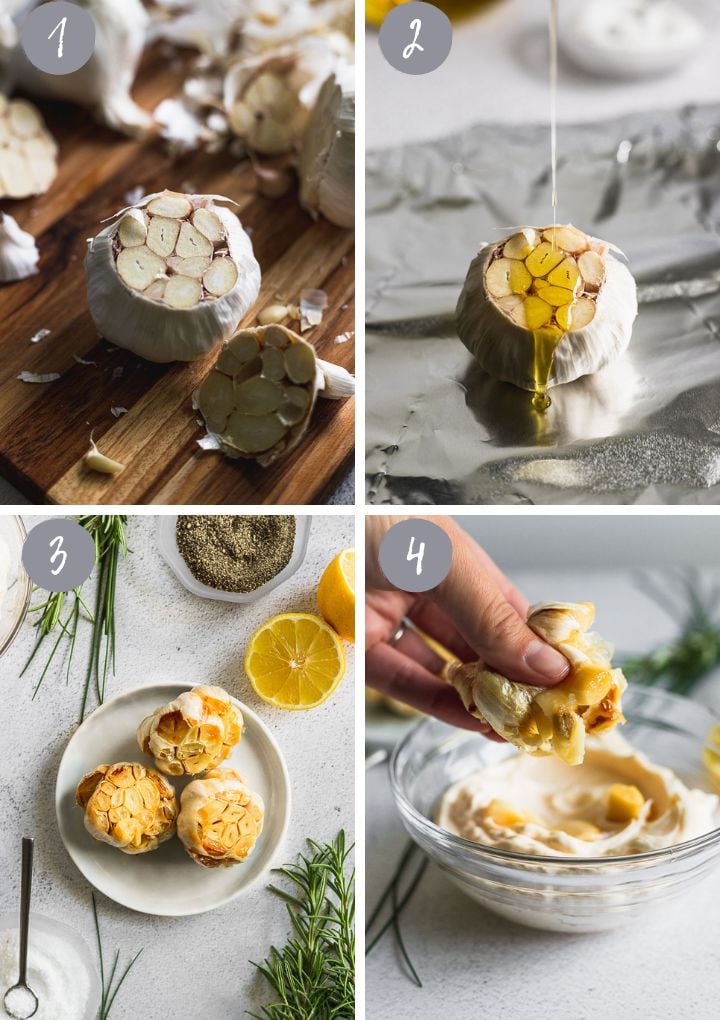
Then, wrap the foil around the garlic bulb, securing any openings so the bulb is fully closed into the foil, and place it in the oven for about 25 minutes. Yes, this is the most time-consuming method for preparing garlic, but it’s 1,000% worth it!
Once it’s soft and caramelized, let it cool to the touch, then squeeze out the cloves and enjoy them!
Ways to Use Roasted Garlic
- Spread the cloves on toasted bread or crostini.
- Use in this herby olive oil dip for bread.
- Make roasted garlic aioli.
- Enjoy with other roasted veggies (yes, it’s so mellow you can just eat a clove!)
- Add it to hummus.
Garlic Powder vs. Garlic Granules
The difference is mainly texture; as you can see from the photos, garlic powder is smooth with a flour-like texture, and granules are more coarse, like sugar.
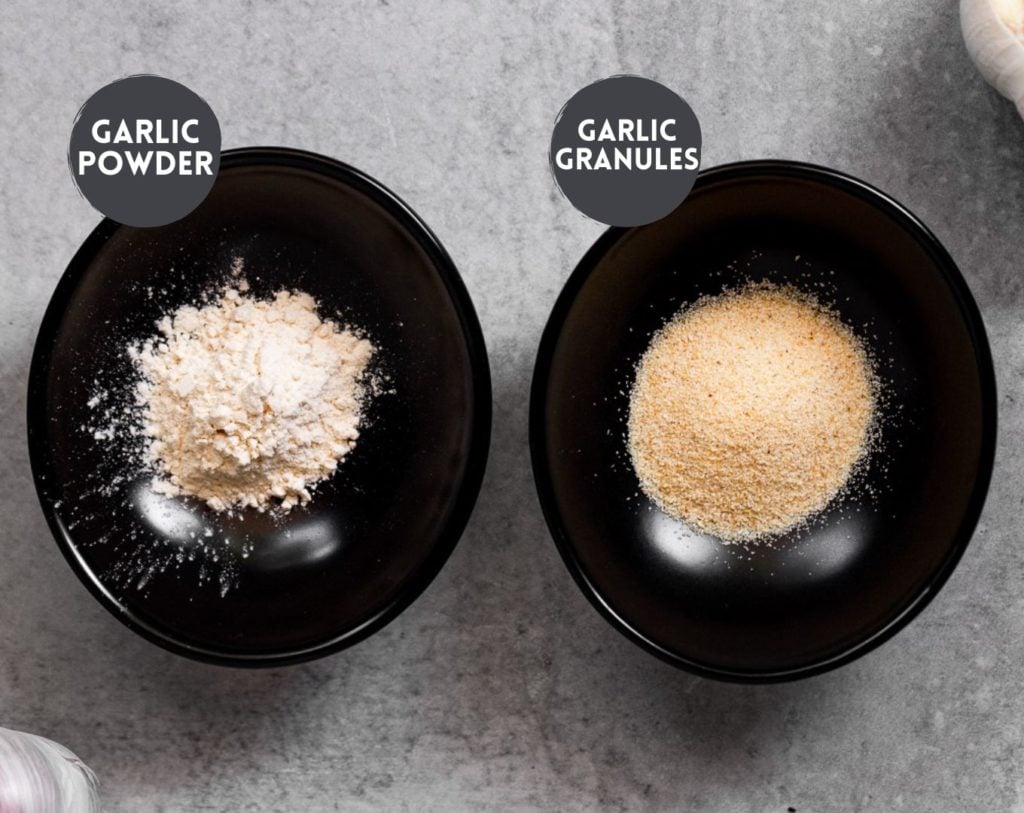
You can use the two interchangeably, however, garlic powder, because it is finer, is more concentrated so you may want to halve the amount if using it for a recipe that calls specifically for granules.
Keep in mind that these spices do lose their flavor as they sit, and do need to be replaced every so often.
Garlic salt is different from both of these and cannot be used interchangeably. Garlic salt is a mixture of garlic powder and table salt; it should be used for seasoning and the extra salt in a recipe should be omitted if used.
More Garlic Questions & Answers
Why is my garlic bitter? When garlic is bitter it is generally because it has been overcooked or cooked over too high of heat. It can also become bitter if you’ve let it sit for too long.
More Recipes with Lots of Garlic!
- Fettuccine Alfredo …and again, don’t miss this Creamy Garlic Pasta with Scallops
- Garlic Roasted Smashed Potatoes
- Toum (Garlic Dip)
- Rustic Garlic Mashed Potatoes
- Garlic Herb Dinner Rolls
- Spicy Garlic Parmesan Popcorn
- Caramelized Onion and Garlic Dip
- Garlic Cheese Biscuits
- Spicy Chili Garlic Green Beans
- Salmon Pasta with Lemon Garlic Butter
- Creamy Avocado Garlic Herb Sauce
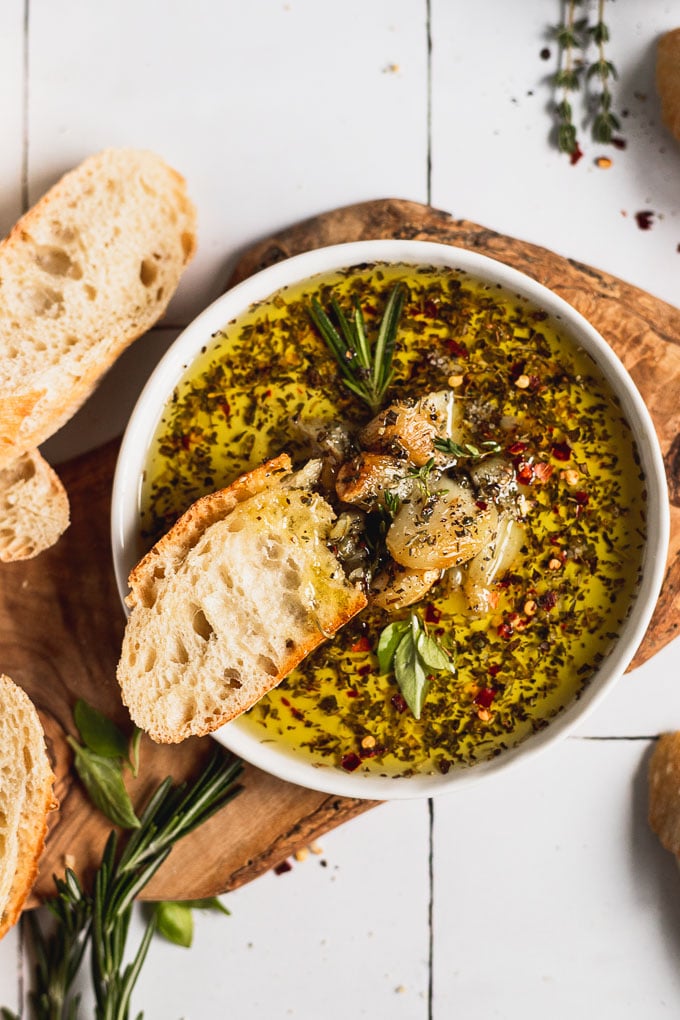





Garlic is one of my favorite ingredients when cooking a family meal. As you mentioned, garlic has a higher concentration of allicin, which is where the flavor comes from when crushed. It is perfect for many recipes because of its more robust flavor. It’s good that there is a crushed garlic distributor.